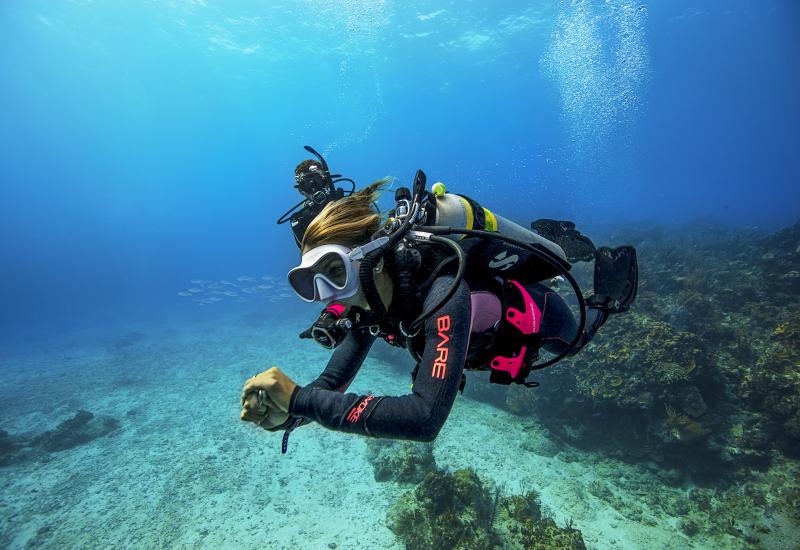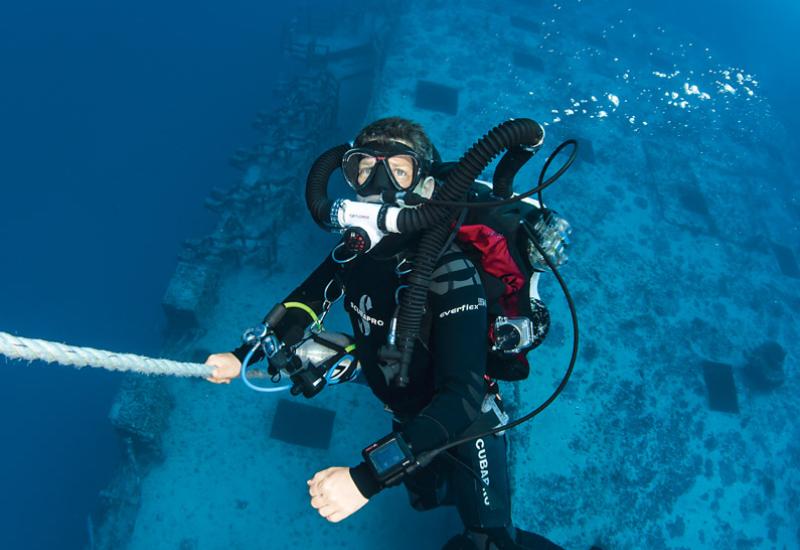What It's Like To Dive In Near Freezing Water

Drysuit Diving
Christian Skauge
Usually there’s some sort of payoff to diving in near-freezing conditions — a magnificent wreck perhaps, or a unique geological feature. I wasn’t so lucky. When I first dived in 37-degree water, in a shallow lake outside London, there was nothing. Well, that’s not quite accurate: At one point I think I spotted a traditional British black taxi through the murk. But I couldn’t be sure — with visibility of only 20 feet, it was hard to tell.
It was so cold, I could barely think. This was problematic because I was there to make the open-water dives for my PADI Dry Suit Diver qualification and needed my wits about me. The water temperature at Wray Bury Dive Centre’s 15-acre lake is always on the chilly side — this is England, after all — but 37 degrees was unusual. A cold snap the week before caused the surface of the lake to freeze, though it had begun to melt by the time of my visit.
Taking my first steps into the lake was just about bearable. It was when my hands — protected by only 3 mm of neoprene — touched the water that I got a sense of just how hard this was going to be. But that was nothing compared to the brain freeze that struck as I made my first descent. I’m a confident, experienced diver, not prone to panic, but the feeling of ice-cold water surrounding my head and neck was too much. I motioned desperately to the instructor that I needed to surface, and came up, my breathing shallow and hurried.
He helped me to calm down, and we soon rejoined the rest of the group on a platform at 22 feet to complete the skill tests. That dive, and the follow-up that afternoon, were kept to just 20 minutes’ bottom time due to the cold. Even so, I had such limited feeling in my fingers by the time I came up for the skill tests that basic tasks — like undoing the clips on my BC or disconnecting and reconnecting my dry suit second stage — were enormously challenging. It took several attempts, with a great deal of motivational support from my instructor, to demonstrate the skills successfully.
Writing about the experience today while I’m warm and dry, it’s hard to even conjure that unexpectedly extreme environment. They are still the hardest dives I’ve ever made.

Christian Skauge
Usually there’s some sort of payoff to diving in near-freezing conditions — a magnificent wreck perhaps, or a unique geological feature. I wasn’t so lucky. When I first dived in 37-degree water, in a shallow lake outside London, there was nothing. Well, that’s not quite accurate: At one point I think I spotted a traditional British black taxi through the murk. But I couldn’t be sure — with visibility of only 20 feet, it was hard to tell.
It was so cold, I could barely think. This was problematic because I was there to make the open-water dives for my PADI Dry Suit Diver qualification and needed my wits about me. The water temperature at Wray Bury Dive Centre’s 15-acre lake is always on the chilly side — this is England, after all — but 37 degrees was unusual. A cold snap the week before caused the surface of the lake to freeze, though it had begun to melt by the time of my visit.
Taking my first steps into the lake was just about bearable. It was when my hands — protected by only 3 mm of neoprene — touched the water that I got a sense of just how hard this was going to be. But that was nothing compared to the brain freeze that struck as I made my first descent. I’m a confident, experienced diver, not prone to panic, but the feeling of ice-cold water surrounding my head and neck was too much. I motioned desperately to the instructor that I needed to surface, and came up, my breathing shallow and hurried.
He helped me to calm down, and we soon rejoined the rest of the group on a platform at 22 feet to complete the skill tests. That dive, and the follow-up that afternoon, were kept to just 20 minutes’ bottom time due to the cold. Even so, I had such limited feeling in my fingers by the time I came up for the skill tests that basic tasks — like undoing the clips on my BC or disconnecting and reconnecting my dry suit second stage — were enormously challenging. It took several attempts, with a great deal of motivational support from my instructor, to demonstrate the skills successfully.
Writing about the experience today while I’m warm and dry, it’s hard to even conjure that unexpectedly extreme environment. They are still the hardest dives I’ve ever made.










